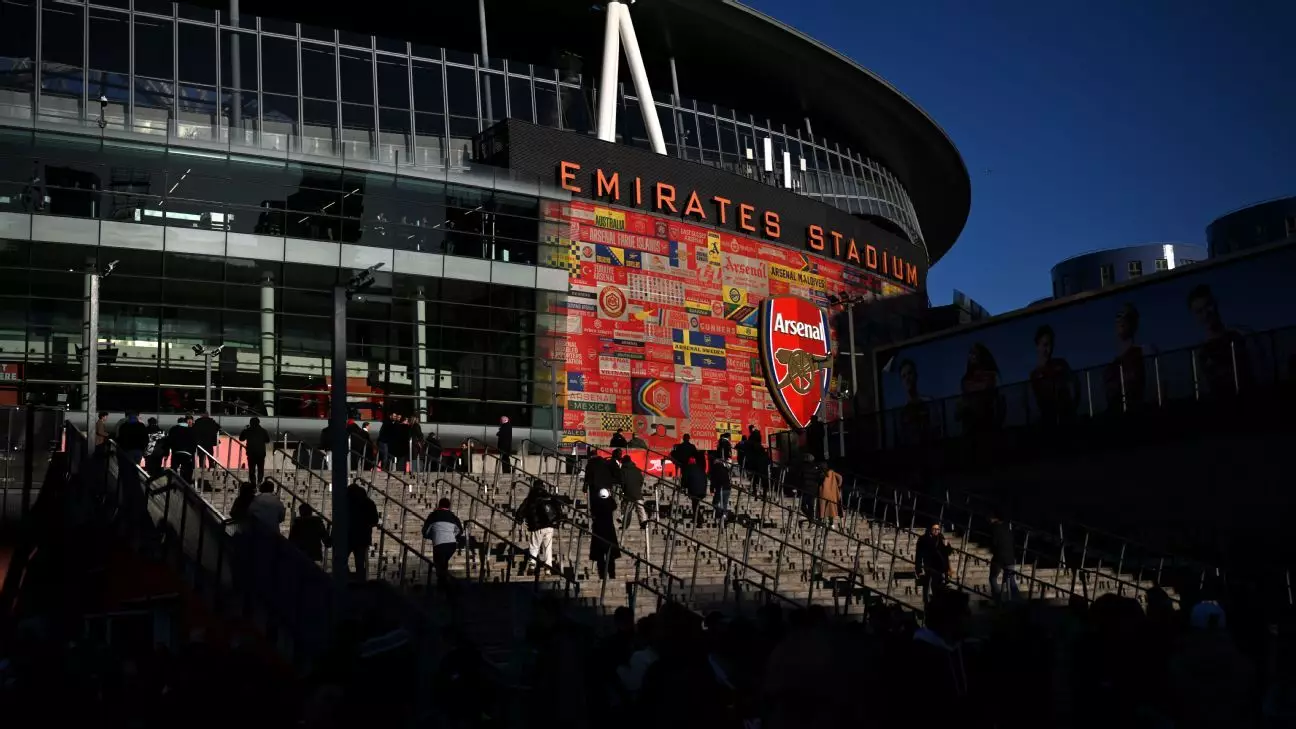Arsenal Football Club recently disclosed significant financial results for the fiscal year ending May 31, 2024, revealing a loss of £17.7 million ($22.3 million). The club reached new heights in revenue generation, achieving a record £616.6 million, a substantial increase from the previous year’s £466.7 million. This impressive leap was bolstered by an influx of £52.4 million from player trading, demonstrating the club’s continued investment in strengthening their squad. The return to the UEFA Champions League after a six-year absence and their admirable performance, reaching the quarterfinals against Bayern Munich, undoubtedly contributed to this revenue surge and highlighted the importance of European competition in financial viability.
Despite the promising revenue figures, Arsenal’s wage expenditures saw a significant rise, escalating from £234.8 million to £327.8 million. This increase signals the club’s commitment to retaining talent and attracting high-profile signings, yet it raises concerns about the sustainability of their financial strategy in light of recent losses. The club’s notable transactions, such as the signings of Declan Rice, Kai Havertz, and Jurrien Timber, reflect a willingness to invest heavily in player quality, yet it also illustrates the precarious balance between expenditure and profitability in an increasingly competitive environment.
The fiscal year was marked by some controversial transfer decisions. While the acquisition of top-tier players is commendable, the decision not to recruit a striker during the summer and winter transfer windows drew criticism. This lack of offensive reinforcement could be interpreted as a miscalculation given Arsenal’s overall ambitions. The club’s net investment during the summer was relatively modest, approximately £13 million, as they sold players like Folarin Balogun and Granit Xhaka for combined sums that contributed positively to financial results.
Arsenal’s financial maneuvers are further complicated by the current landscape of UEFA’s Financial Fair Play (FFP) regulations and the Premier League’s Profit and Sustainability Rules (PSR). The club’s statement reflects genuine concern over how these parameters restrict their ability to raise funds, subsequently affecting their competitiveness in the transfer market. With all Premier League clubs reportedly compliant with PSR regulations, the pressure intensifies for Arsenal to find innovative strategies for generating profit while remaining within these compliance frameworks.
Despite facing market limitations, the club has shown a proactive approach in offloading academy graduates to balance their books. The sales of Emile Smith Rowe and Eddie Nketiah not only reflect a fiscal strategy but also a philosophical shift in how player development and youth talent are leveraged for financial stabilization. However, the rejection of a £40 million bid for Ollie Watkins, deemed too high at £60 million, calls into question Arsenal’s assessment of player value in a challenging acquisition market.
As Arsenal enters a crucial period of both on-field and off-field challenges, it is essential for the club’s management to reassess their financial strategy amidst soaring wages and fluctuating market conditions. With the prospect of expanding their European presence, the club must find equilibrium between ambitious player investments and sustainable economic practices. The ongoing evolution of Arsenal’s financial landscape offers valuable lessons on the modern dynamics of football finance, underscoring the importance of adaptability in an unpredictable environment.
